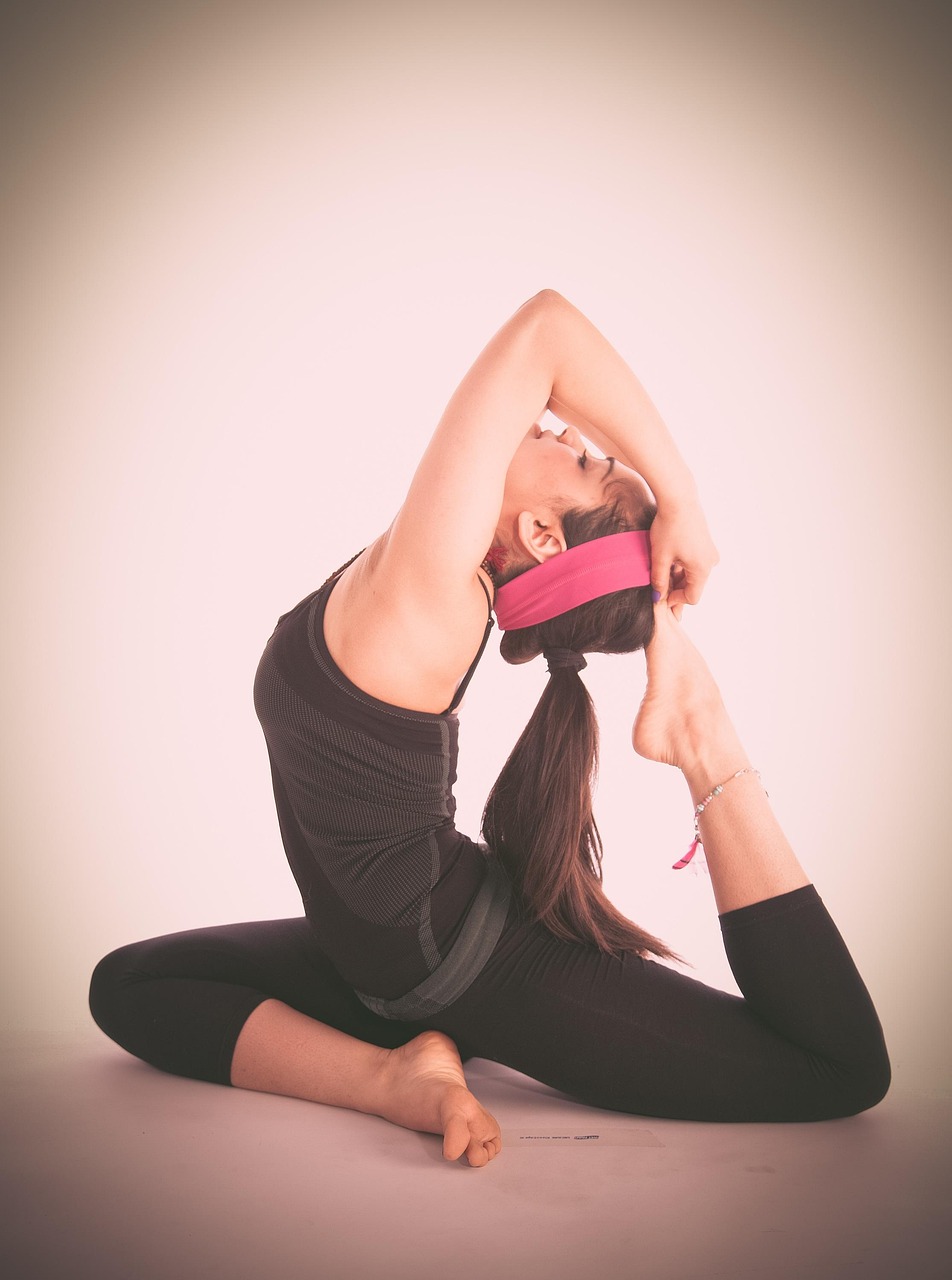Benefits of Yoga
Introduction
Yoga, a centuries-old practice originating in ancient India, has transcended cultures and countries to become a globally recognized wellness routine. From physical flexibility to mental clarity, the benefits of yoga are numerous and well-documented. In this comprehensive article, we will explore yoga’s many advantages to your mind, body, and spirit.
Table of Contents
- 1. What is Yoga?
- 2. A Brief History of Yoga
- 3. Physical Benefits of Yoga
- Improved Flexibility
- Enhanced Strength
- Better Posture and Balance
- Supports Weight Management
- Increased Cardiovascular Health
- 4. Mental Benefits of Yoga
- Reduces Stress and Anxiety
- Boosts Mental Clarity and Focus
- Improves Sleep Quality
- Promotes Emotional Stability
- 5. Spiritual Benefits of Yoga
- Deepens Connection with Self
- Encourages Mindfulness and Presence
- Facilitates Personal Growth and Healing
- 6. Types of Yoga and Their Benefits
- Hatha Yoga
- Vinyasa Yoga
- Ashtanga Yoga
- Bikram Yoga
- Yin Yoga
- 7. How to Incorporate Yoga into Your Daily Life
- 8. Conclusion
- 9. FAQs About Yoga
1. What is Yoga?
Yoga is much more than just physical postures (asanas). It is a holistic practice that includes breath control (pranayama), meditation (dhyana), and ethical principles (yamas and niyamas). Its ultimate aim is to harmonize the mind, body, and soul, fostering a deeper connection with oneself and the universe.
While many people associate yoga with its physical benefits, the practice goes far beyond physical wellness. The word “yoga” itself means “union” in Sanskrit, signifying the union of mind, body, and spirit. Yoga promotes overall well-being through a balanced approach, making it both a spiritual and physical practice.
2. A Brief History of Yoga
Yoga’s origins can be traced back more than 5,000 years, making it one of the oldest forms of physical and spiritual discipline. The earliest records of yoga are found in ancient Hindu texts, such as the Vedas and the Upanishads. Over the centuries, various schools and types of yoga emerged, leading to the popularization of the practice worldwide.
In the 20th century, yoga was introduced to Western cultures, evolving into a mainstream form of exercise and relaxation. Today, yoga is practiced by millions globally, serving as a versatile tool for stress management, physical fitness, and personal growth.
3. Physical Benefits of Yoga
One of the most immediate and tangible benefits of yoga is its impact on the physical body. Here’s how yoga enhances your physical health:
Improved Flexibility
Yoga emphasizes slow, controlled movements that stretch and elongate muscles. With regular practice, the body becomes more flexible, joints loosen up, and muscles become more supple. Enhanced flexibility reduces the risk of injury, improves mobility, and promotes overall physical ease in daily activities.
Enhanced Strength
Though yoga appears to focus on flexibility, many poses require a significant amount of strength, particularly in the core, legs, and arms. Poses like plank, downward dog, and warrior positions work to build muscle tone and endurance. Unlike weight lifting, yoga enhances strength in a balanced, holistic way that also improves muscle coordination.
Better Posture and Balance
Many yoga poses demand mindful engagement with the spine, which can correct poor posture. Poses like mountain pose, tree pose, and standing forward bends help align the spine, improve balance, and reduce the slouching that may cause back pain. Practicing yoga regularly will lead to better overall posture, both on and off the mat.
Supports Weight Management
Though not traditionally considered a calorie-burning workout, certain forms of yoga, like Vinyasa and Ashtanga, can burn significant amounts of calories. Yoga also reduces stress, which can prevent stress-related weight gain. Additionally, yoga’s mindful approach to eating can support healthy weight management.
Increased Cardiovascular Health
Yoga has been shown to lower blood pressure, improve circulation, and reduce cholesterol levels. Practices such as pranayama (breathing exercises) enhance lung capacity and oxygenate the blood, while more vigorous forms of yoga provide cardiovascular benefits similar to aerobic exercise.
4. Mental Benefits of Yoga
Yoga’s impact extends far beyond the physical; its mental benefits are equally profound. Let’s explore how yoga nurtures mental well-being:
Reduces Stress and Anxiety
Yoga activates the parasympathetic nervous system, which induces a relaxation response in the body. The combination of breath control, meditation, and physical poses helps to lower cortisol levels—the body’s primary stress hormone. Many people find that yoga provides immediate relief from stress and anxiety, promoting calmness and relaxation.
Boosts Mental Clarity and Focus
Regular yoga practice helps improve concentration and focus. The controlled breathing and movement patterns of yoga help quiet the mind, allowing for improved mental clarity and enhanced cognitive functioning. This makes yoga a valuable tool for anyone seeking better focus in their personal or professional life.
Improves Sleep Quality
Insomnia and poor sleep are often related to stress and anxiety. Yoga can help ease the mind and body into a state of relaxation, preparing you for restful sleep. Practices like restorative yoga or Yoga Nidra (yogic sleep) are particularly effective for calming the nervous system and improving sleep quality.
Promotes Emotional Stability
Yoga’s focus on mindfulness encourages you to observe your emotions without judgment. This awareness can lead to emotional resilience and stability, as yoga teaches you to respond to life’s challenges with a balanced, calm perspective. Over time, yoga practitioners may experience a reduction in mood swings and an increase in emotional intelligence.
5. Spiritual Benefits of Yoga
Yoga is deeply rooted in spirituality, making it more than just a physical or mental practice. Here’s how yoga benefits your spiritual health:
Deepens Connection with Self
Yoga invites you to turn inward and connect with your true self. Through consistent practice, you may find a deeper sense of self-awareness, learning more about your body, mind, and emotions. This self-knowledge can lead to greater personal growth and a sense of inner peace.
Encourages Mindfulness and Presence
Yoga teaches mindfulness—being fully present in the moment. This focus on the “here and now” allows practitioners to cultivate a sense of gratitude and acceptance. Yoga helps to develop mindfulness, whether on the mat or in daily life, helping you stay grounded in the present.
Facilitates Personal Growth and Healing
Yoga encourages self-reflection and introspection, which can lead to personal growth and healing. Whether you’re dealing with emotional trauma or seeking a deeper understanding of yourself, yoga provides a safe space for exploration and transformation. The spiritual journey of yoga is often one of self-discovery and healing.
6. Types of Yoga and Their Benefits
There are many types of yoga, each offering unique benefits. Here’s an overview of some popular styles and how they can benefit you:
Hatha Yoga
Hatha yoga is a gentle form of yoga that focuses on basic postures and breathing exercises. It’s an excellent choice for beginners and provides a foundation for other yoga styles. The slow pace of Hatha yoga helps to build strength, flexibility, and mindfulness.
Vinyasa Yoga
Vinyasa yoga, also known as “flow” yoga, involves a sequence of poses that flow seamlessly from one to the next. It’s a more dynamic practice that builds strength and cardiovascular endurance. The continuous movement makes Vinyasa yoga ideal for those looking for a more active workout.
Ashtanga Yoga
Ashtanga yoga is a vigorous, fast-paced style that follows a set sequence of postures. It’s physically demanding and builds strength, flexibility, and stamina. Ashtanga yoga is perfect for those looking for a disciplined, challenging practice.
Bikram Yoga
Bikram yoga is practiced in a heated room (around 105°F or 40°C) and follows a specific sequence of 26 poses. The heat helps to loosen muscles and allows for deeper stretching, while also promoting detoxification through sweat. It’s a popular choice for those looking for a more intense yoga experience.
Yin Yoga
Yin yoga is a slower, meditative style of yoga where poses are held for longer periods (3-5 minutes). It targets the connective tissues, like ligaments and fascia, rather than muscles. Yin yoga is excellent for improving flexibility and promoting deep relaxation.
7. How to Incorporate Yoga into Your Daily Life
Incorporating yoga into your daily routine doesn’t have to be time-consuming or difficult. Here are a few tips for making yoga a regular part of your life:
- Start with 10 Minutes a Day: Begin with a short, manageable practice that fits into your schedule.
- Set a Regular Time: Whether it’s in the morning or evening, having a designated time for yoga will help create consistency.
- Create a Yoga Space: Dedicate a quiet space in your home for your yoga practice to help you focus and relax.
- Try Different Styles: Explore various types of yoga to find the ones that resonate with you.
- Practice Mindfulness: Use yoga as a tool to practice mindfulness and be present in the moment, even outside of formal yoga sessions.
8. Conclusion
Yoga offers a vast range of benefits for the mind, body, and spirit. From improving physical health and mental clarity to fostering spiritual growth, yoga is a comprehensive practice that can enhance every aspect of your life. Whether you’re new to yoga or a seasoned practitioner, the key to reaping its benefits lies in consistent practice and mindfulness.
9. FAQs About Yoga
Q1: How often should I practice yoga to see results?
A: For most people, practicing yoga 2-3 times per week is enough to see noticeable improvements in flexibility, strength, and mental well-being. However, even practicing once a week can be beneficial.
Q2: Can yoga help with weight loss?
A: While yoga alone may not be as effective for weight loss as more intense cardiovascular exercises, it supports weight management by reducing stress and promoting mindful eating. Certain styles of yoga, like Vinyasa or Bikram, can also burn significant calories.
Q3: Is yoga suitable for beginners?
A: Absolutely! Yoga is highly adaptable, and there are many styles, like Hatha and Yin yoga, that are ideal for beginners. Start with beginner-friendly classes to ease into the practice.
Q4: Can yoga improve mental health?
A: Yes, yoga is widely recognized for its mental health benefits. It helps reduce stress, anxiety, and depression while improving focus, mindfulness, and emotional well-being.
Q5: Do I need to be flexible to do yoga?
A: No, flexibility is not a requirement to start practising yoga. Flexibility improves with regular practice, and yoga is designed to meet you where you are, regardless of your current fitness level.
Q6: What should I wear to practice yoga?
A: Wear comfortable, breathable clothing that allows you to move freely. Yoga-specific clothing is not necessary, but it should not restrict your movements.
https://health2nutrition.com/category/yoga
This article should give you a solid understanding of yoga’s numerous benefits across physical, mental, and spiritual dimensions.




One thought on “The Benefits of Yoga: Transforming 1 Your Mind, Body, and Soul”